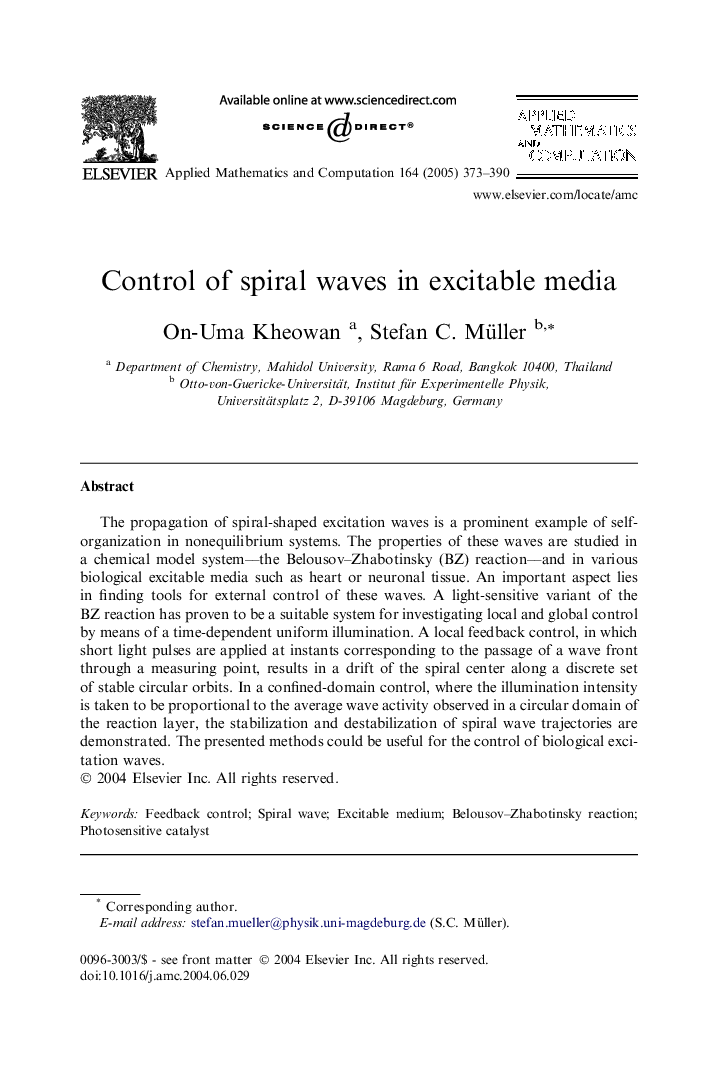| Article ID | Journal | Published Year | Pages | File Type |
|---|---|---|---|---|
| 9506741 | Applied Mathematics and Computation | 2005 | 18 Pages |
Abstract
The propagation of spiral-shaped excitation waves is a prominent example of self-organization in nonequilibrium systems. The properties of these waves are studied in a chemical model system--the Belousov-Zhabotinsky (BZ) reaction--and in various biological excitable media such as heart or neuronal tissue. An important aspect lies in finding tools for external control of these waves. A light-sensitive variant of the BZ reaction has proven to be a suitable system for investigating local and global control by means of a time-dependent uniform illumination. A local feedback control, in which short light pulses are applied at instants corresponding to the passage of a wave front through a measuring point, results in a drift of the spiral center along a discrete set of stable circular orbits. In a confined-domain control, where the illumination intensity is taken to be proportional to the average wave activity observed in a circular domain of the reaction layer, the stabilization and destabilization of spiral wave trajectories are demonstrated. The presented methods could be useful for the control of biological excitation waves.
Related Topics
Physical Sciences and Engineering
Mathematics
Applied Mathematics
Authors
On-Uma Kheowan, Stefan C. Müller,
